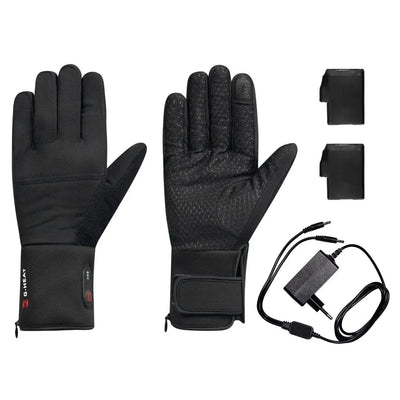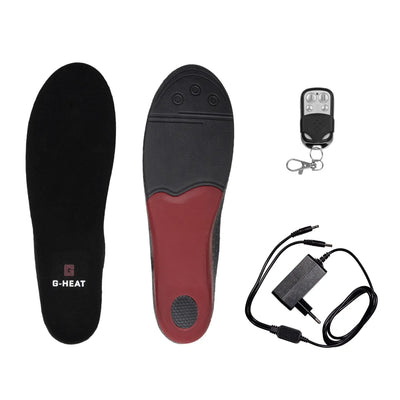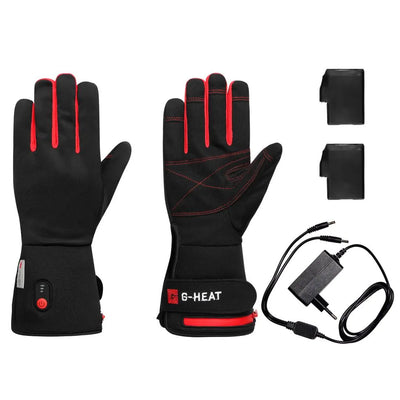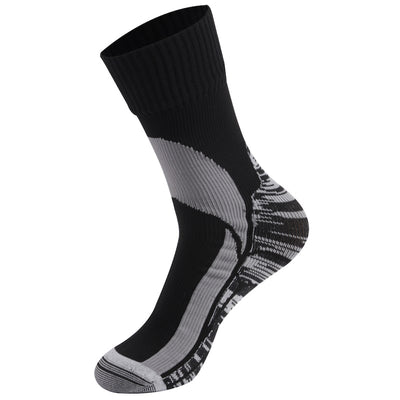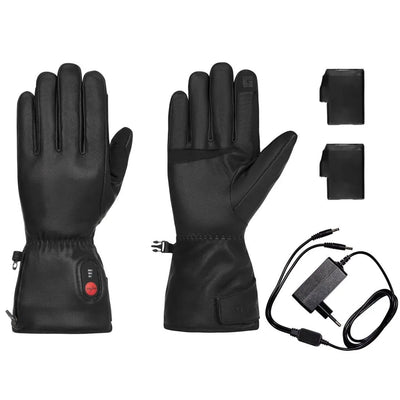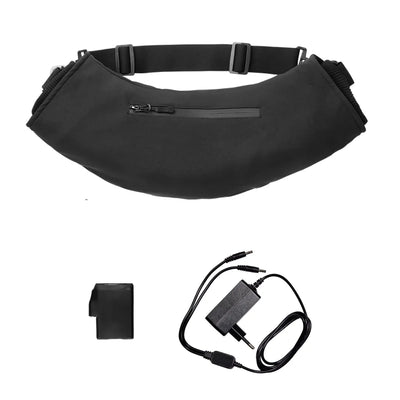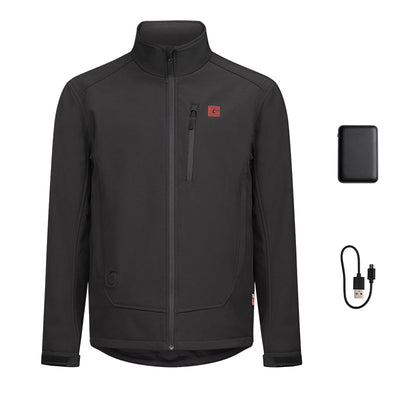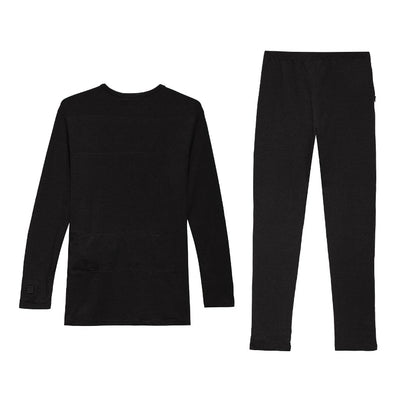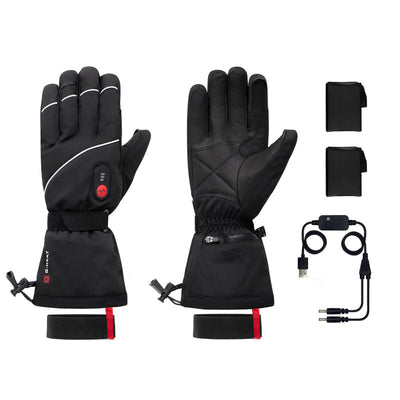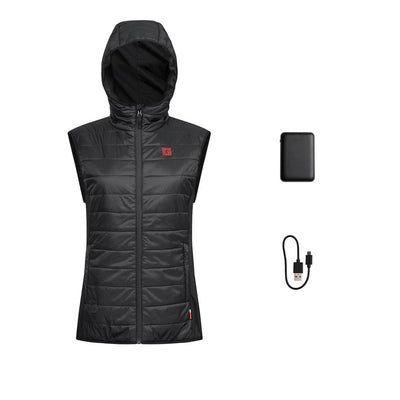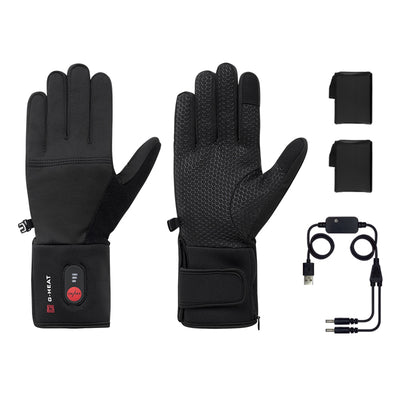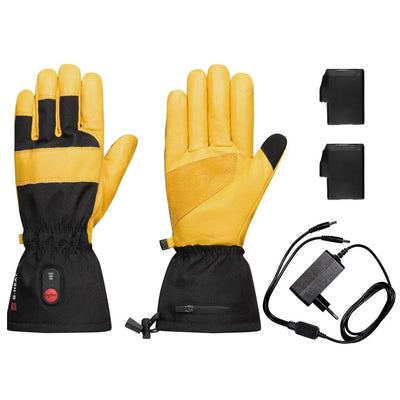
Semelles chauffantes
Body thermoregulation
Man is a homeotherm: a living being whose constant average temperature is independent of the surrounding environment...
Resisting cold, adapting to heat, maintaining a constant internal temperature of around 37°C, whatever your metabolic rate or the temperature of the surrounding environment: this is the principle of thermoregulation.
When a person is exposed to the cold for too long, their body may become unable to maintain an adequate temperature to function properly. If the oral temperature falls below 35°C, the person is hypothermic.
Hyperthermia, on the other hand, is a rise in body temperature caused by an accumulation of heat. This phenomenon occurs particularly in the event of sunstroke or heatwave.
Too much cold or too much heat is a source of discomfort, and can even lead to injuries such as frostbite...
Why are hands and feet more exposed to the cold?
Feet and hands are the first limbs affected by the sensation of cold, mainly due to reduced blood circulation at these levels. In addition to a sensation of local cold, this creates a loss of motricity and overall body fatigue.
The brain, alerted by this unpleasant sensation, triggers a surge of energy to warm the hands and feet, without success for the most sensitive.
For example, people with Raynaud's disease (3-12% of men and 6-20% of women are affected). This is followed by a feeling of weakness accompanied by shivering.
The benefits of heated garments
To (re)act when the body can no longer do so, and to prevent the risks associated with the cold, G-Heat has developed a range of heated garments to provide continuous warmth, well-being and comfort during your activities.
High-performance garments for outdoor activities in cold weather, which can even be used without batteries when temperatures remain cool but bearable, but also as comfort aids for anyone suffering from the cold.
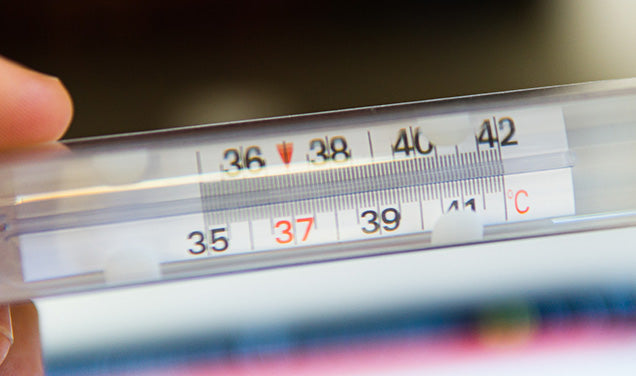
WHAT TYPES OF ACTIVITY CAN HEATED INSOLES BE USED FOR?
The right insoles for professionals
The market season also means winter, the cold ground behind the stalls, the immobility of the vendor waiting for the customer. Construction workers, craftsmen and farmers are also the first to suffer from frostbite, slowing performance, making work even more exhausting and increasing the risk of illness.
Inclement weather, such as rain and frost, is felt first by the arch of the foot, and this can lead to difficulties such as circulation problems, or other coronary concerns. Heated insoles provide a thermal barrier against the cold, with optimum comfort thanks to their heat source under the arch of the foot.
Heated insoles for athletes
Heated insoles G-Heat can be used for sports such as skiing, hunting, fishing or horse riding... Walking through a damp forest before standing for long hours waiting patiently for game or fish can be hard on the body. With inadequate posture and bone-watering humidity, heated insoles enable these activities to be carried out in relative comfort. The same applies to horse riders and skiers, who sometimes spend whole afternoons braving the cold.
The heat diffused under the arch of the foot provides real insulation between the ground and the rest of the body, allowing you to get through long periods of immobility without suffering the pangs of cold or snow.
WHY AND WHEN TO USE HEATED INSOLES?
Whether you're a professional or an individual, heated insoles can be the ideal solution for coping with extreme outdoor temperatures. There's nothing more unpleasant than freezing feet in cold weather. Whether you're a professional, a sportsman or a private individual, winter no longer has to be a hindrance to your activity.
Heated insoles from G-Heat have been specially designed to remedy this problem. Combining comfort, efficiency and simplicity, we now offer you the chance to discover a product perfect for outdoor activities, even in the depths of winter.
THE BENEFITS OF HEATED INSOLES
Fighting the cold is what these products are all about, but you can't neglect the comfort of your equipment. That's why all our products have been designed to offer extra comfort. The insoles are specially designed to offer better posture and help blood circulation, which is sometimes put to the test by freezing weather.
No need to add many layers of clothing to counter the low temperatures, the insoles once inserted in the shoes diffuse a continuous heat that will help warm your whole body.
How to operate your heated insoles
Before using for the first time, fully charge the batteries for 12 hours. Thereafter, we recommend recharging your batteries before and after each use, to get the most out of your heated garment.
It's also very important to charge your batteries thoroughly at the end of each winter season, or before any long period of storage. We strongly recommend charging them at least every 3/4 months.
How to care for your heated insoles
Hand-wash (or surface-wash) your insoles with warm water and soap or a mild detergent without fabric softener, after removing the battery. We do not recommend machine washing.
To wring them out and dry them, you'll need a little patience. Don't try to wring them out, or dry them on a radiator or in a tumble-dryer, as you risk damaging the heating systems: that would be a shame!
Body thermoregulation
Man is a homeotherm: a living being whose constant average temperature is independent of the surrounding environment...
Resisting cold, adapting to heat, maintaining a constant internal temperature of around 37°C, whatever your metabolic rate or the temperature of the surrounding environment: this is the principle of thermoregulation.
When a person is exposed to the cold for too long, their body may become unable to maintain an adequate temperature to function properly. If the oral temperature falls below 35°C, the person is hypothermic.
Hyperthermia, on the other hand, is a rise in body temperature caused by an accumulation of heat. This phenomenon occurs particularly in the event of sunstroke or heatwave.
Too much cold or too much heat is a source of discomfort, and can even lead to injuries such as frostbite...
Why are hands and feet more exposed to the cold?
Feet and hands are the first limbs affected by the sensation of cold, mainly due to reduced blood circulation at these levels. In addition to a sensation of local cold, this creates a loss of motricity and overall body fatigue.
The brain, alerted by this unpleasant sensation, triggers a surge of energy to warm the hands and feet, without success for the most sensitive.
For example, people with Raynaud's disease (3-12% of men and 6-20% of women are affected). This is followed by a feeling of weakness accompanied by shivering.
The benefits of heated garments
To (re)act when the body can no longer do so, and to prevent the risks associated with the cold, G-Heat has developed a range of heated garments to provide continuous warmth, well-being and comfort during your activities.
High-performance garments for outdoor activities in cold weather, which can even be used without batteries when temperatures remain cool but bearable, but also as comfort aids for anyone suffering from the cold.

WHAT TYPES OF ACTIVITY CAN HEATED INSOLES BE USED FOR?
The right insoles for professionals
The market season also means winter, the cold ground behind the stalls, the immobility of the vendor waiting for the customer. Construction workers, craftsmen and farmers are also the first to suffer from frostbite, slowing performance, making work even more exhausting and increasing the risk of illness.
Inclement weather, such as rain and frost, is felt first by the arch of the foot, and this can lead to difficulties such as circulation problems, or other coronary concerns. Heated insoles provide a thermal barrier against the cold, with optimum comfort thanks to their heat source under the arch of the foot.
Heated insoles for athletes
Heated insoles G-Heat can be used for sports such as skiing, hunting, fishing or horse riding... Walking through a damp forest before standing for long hours waiting patiently for game or fish can be hard on the body. With inadequate posture and bone-watering humidity, heated insoles enable these activities to be carried out in relative comfort. The same applies to horse riders and skiers, who sometimes spend whole afternoons braving the cold.
The heat diffused under the arch of the foot provides real insulation between the ground and the rest of the body, allowing you to get through long periods of immobility without suffering the pangs of cold or snow.
WHY AND WHEN TO USE HEATED INSOLES?
Whether you're a professional or an individual, heated insoles can be the ideal solution for coping with extreme outdoor temperatures. There's nothing more unpleasant than freezing feet in cold weather. Whether you're a professional, a sportsman or a private individual, winter no longer has to be a hindrance to your activity.
Heated insoles from G-Heat have been specially designed to remedy this problem. Combining comfort, efficiency and simplicity, we now offer you the chance to discover a product perfect for outdoor activities, even in the depths of winter.
THE BENEFITS OF HEATED INSOLES
Fighting the cold is what these products are all about, but you can't neglect the comfort of your equipment. That's why all our products have been designed to offer extra comfort. The insoles are specially designed to offer better posture and help blood circulation, which is sometimes put to the test by freezing weather.
No need to add many layers of clothing to counter the low temperatures, the insoles once inserted in the shoes diffuse a continuous heat that will help warm your whole body.
How to operate your heated insoles
Before using for the first time, fully charge the batteries for 12 hours. Thereafter, we recommend recharging your batteries before and after each use, to get the most out of your heated garment.
It's also very important to charge your batteries thoroughly at the end of each winter season, or before any long period of storage. We strongly recommend charging them at least every 3/4 months.
How to care for your heated insoles
Hand-wash (or surface-wash) your insoles with warm water and soap or a mild detergent without fabric softener, after removing the battery. We do not recommend machine washing.
To wring them out and dry them, you'll need a little patience. Don't try to wring them out, or dry them on a radiator or in a tumble-dryer, as you risk damaging the heating systems: that would be a shame!





